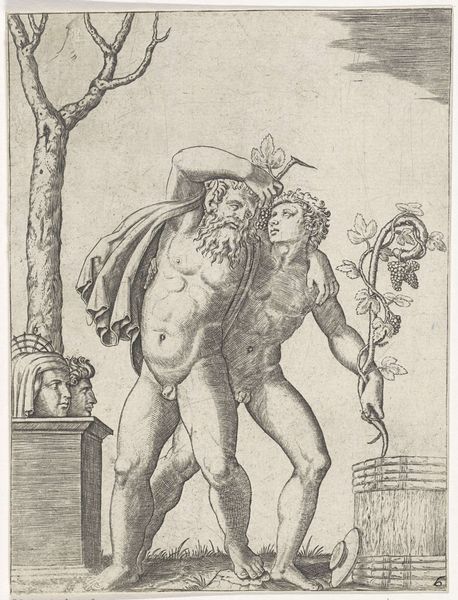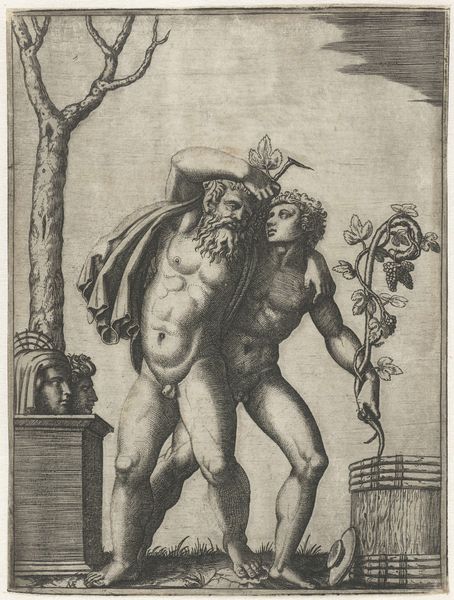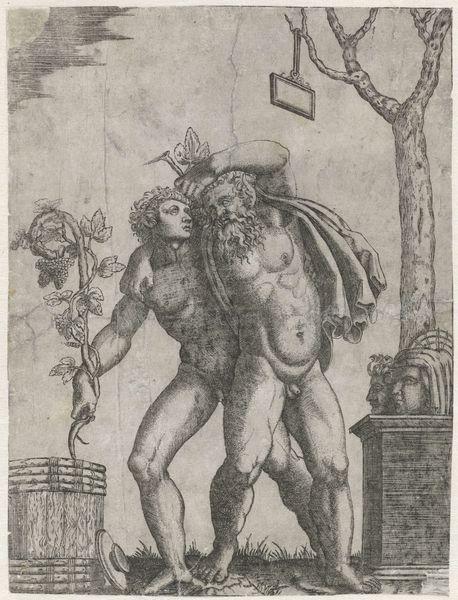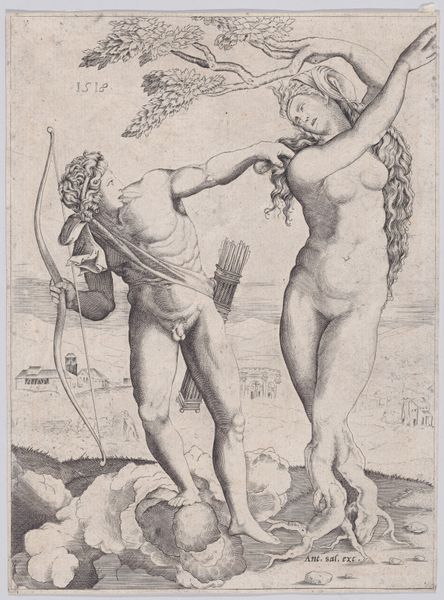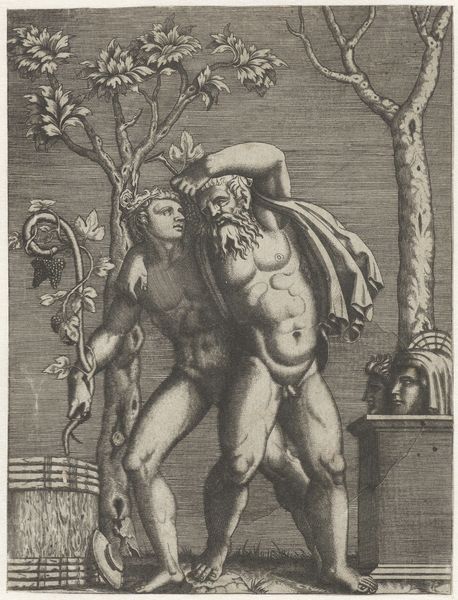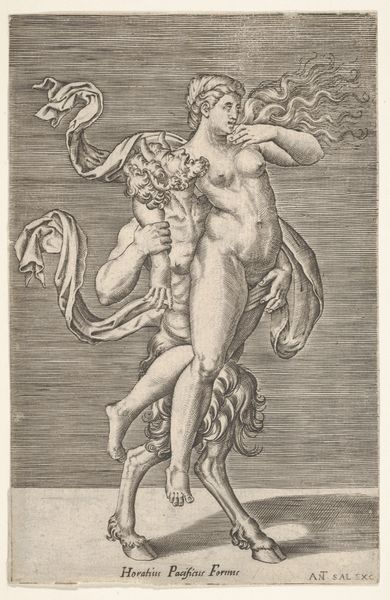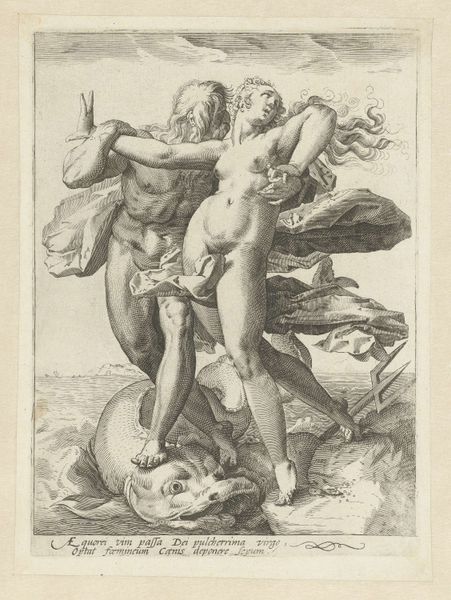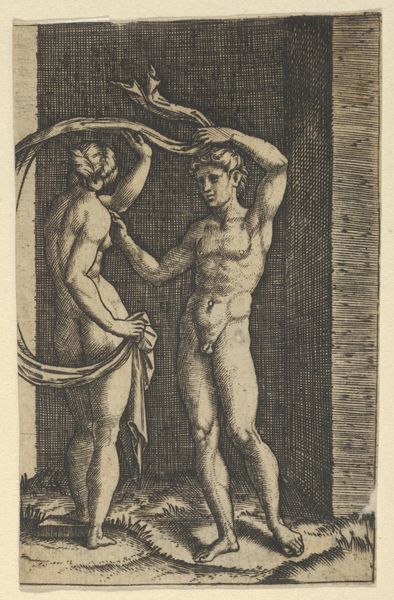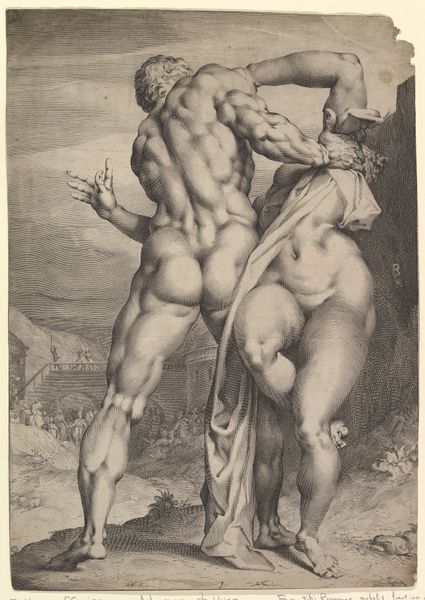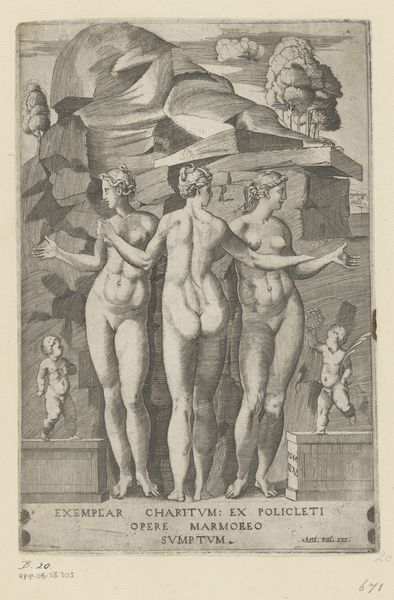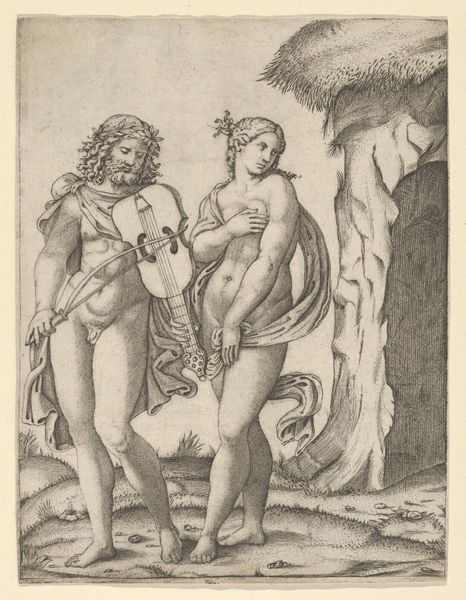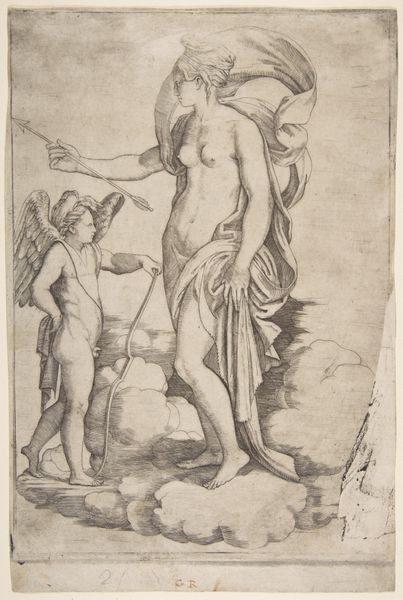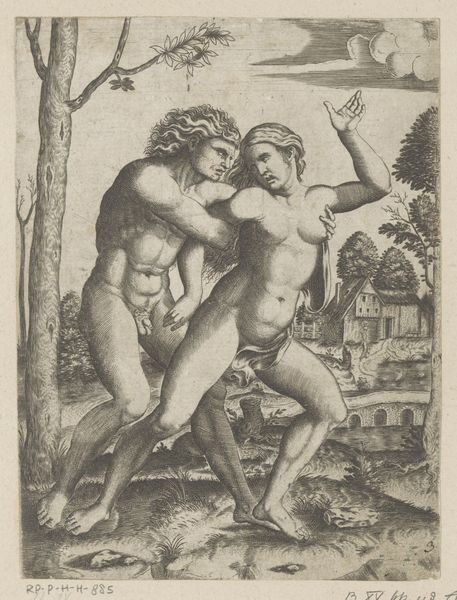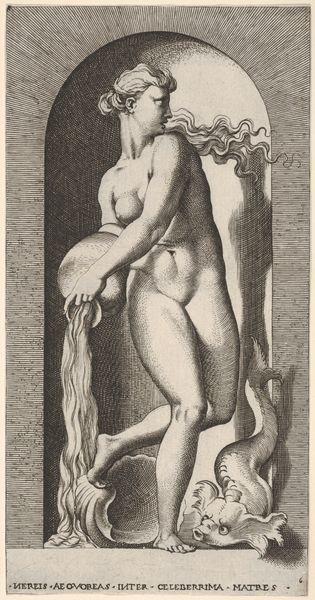
Speculum Romanae Magnificentiae: Young and Old Bacchant 1514 - 1536
0:00
0:00
drawing, print, engraving
#
drawing
#
imaginative character sketch
#
allegory
# print
#
figuration
#
form
#
11_renaissance
#
line
#
history-painting
#
italian-renaissance
#
nude
#
engraving
Dimensions: sheet: 6 3/4 x 5 1/8 in. (17.2 x 13 cm) mount: 10 7/8 x 10 1/16 in. (27.6 x 25.5 cm)
Copyright: Public Domain
This print of a Young and Old Bacchant was made by Marcantonio Raimondi sometime before 1534, using the intaglio process of engraving. That means the image was incised into a metal plate, likely copper, with a tool called a burin. Look closely, and you can see the crisp, precise lines that define the figures, drapery, and background. The depth and spacing of these lines create areas of light and shadow, giving the image form and volume. Raimondi was a master of this technique, renowned for his ability to translate drawings and paintings into print form. Engraving was a highly skilled craft, requiring years of training to master the control of the burin and the understanding of how to create tonal effects. In Raimondi’s time, printmaking was also a commercial enterprise. Prints like this one were produced in multiples, making art more accessible to a wider audience. The labor invested in each plate, combined with the potential for mass production, reflects the changing dynamics of art and consumption in the Renaissance. By considering the materials and techniques employed, we gain insight into the cultural and economic context in which this image was created, challenging the traditional separation of fine art from the skilled crafts.
Comments
No comments
Be the first to comment and join the conversation on the ultimate creative platform.
